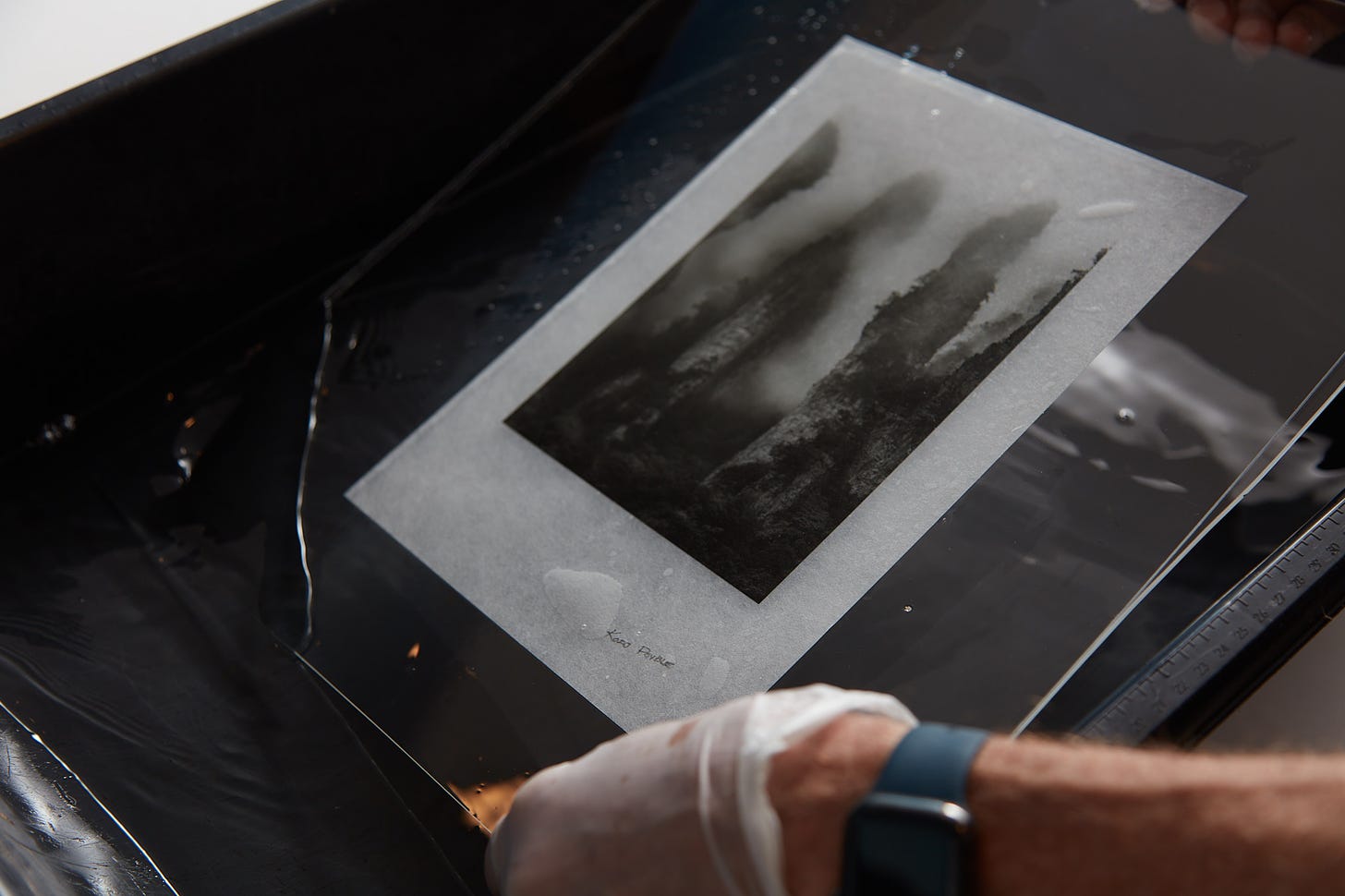
A few weeks ago I published a piece regarding what appeared to be some sort of insanity in terms of mistreatment of prints. The gist of that newsletter installment was that the Kozo (mulberry) fibered papers from Awagami seem to be extremely resilient and strong compared to cotton based papers when it comes to wrinkles and creases. After bizarre crumpling in ways far worse than the expected minor dents, folds, and distortions that easily occur during loose print handling for the thin varieties of Awagami papers, they look as good or better than new after wetting them and rolling them flat.
One of our community members asked the fundamental question; “Why would one crumple up paper and then soak it in water”? I gave a very vague answer to stay tuned. Today I’ll take the opportunity to share a few things with all of you regarding why we would mistreat a print as illustrated in that piece.
Repair Or Restoration
The endeavor started with our initial dive into Awagami peel-apart papers. In short these papers confused us when looking at their high cost and error prone use characteristics. These peel-apart papers cost far more than the normal “thin” varieties of Kozo or Inbe. They cost more than the thick varieties for that matter. The peel-apart Kozo Double-Layered and Mitsumata Double-Layered both offer a thinner, more translucent sheet than the Murakumo Kozo that doesn’t have to be peeled apart after printing. The difference is minor as far as we could see.
The big question we had was why would we want to pay more for a riskier, harder to handle material if the end results were hard differentiate. We set out to find those answers in our own experience. The first thing we encountered was how easy it was to introduce minor wrinkles, folds, and other marks in the print while peeling the papers apart. In addition to those flaws the peeled top layer is extremely curled after peeling it from the base layer.
An idea immediately occurred to us. Let’s see if we can flatten the paper and remove all those imperfections by soaking it then rolling it flat on a very smooth, perfect surface. The easiest, most convenient smooth, perfect surface we had on hand happened to be a hunk of glass from an old picture frame. That’s what we used. To our chagrin the print looked perfect after it dried. The next question was just how far could we go in terms of wrinkles. We viciously crumpled the same sheet into a tiny ball. After wetting, rolling it flat, and letting it dry we again saw ablsolutely no trace of the absuse.
There is the long answer to “why”. All of the thin varieties of Awagami papers no matter if they are peel-apart or just the very delicate varieties of Kozo, Inbe, or Unryu can be restored if there are bent edges or other minor imperfections introduced while handling loose prints.
An Unexpected Discovery
Before any of you race off to flatten or remove bent corners from your thin Awagami prints with the above method, read the rest of our accidental discovery. The headline is that the peel-apart papers stick to glass. I don’t mean kind of stick a little bit. When I say that they stick to glass it might be better to describe them has hard mounted to that glass as if they were laminated on there with dry-mount adhesive.
Yes, there are no air bubbles, they are completely flat, there is no sign of them lifting at the edges, you’d need a razor blade to scrape them off. There’s a lot more to that story. The first bit is that they immediately release if the glass is rewet. They float off the glass with zero effort and remain flat and undamaged. This means you can use this method to restore prints to perfect flatness after handling as long as you have another way to dry them while remaining flat.
This discovery lead us down a trail of questions and experiments that’s taken quite a bit of time and effort to get solid answers. Of course we will share those here with the community. Here’s a few initial answers to questions that might arise immediately.
Yes, only the peel-apart papers seem to have this property of sticking to glass.
Do they stick to other surfaces? Yes, they seem to stick just as well to plexiglass.
Can you wet and re-stick them? Yes but not an infinite number of times. Initial results suggests more than one time but fewer than five times.
What about rougher surfaces? Yes but I don’t want to misguide anyone until we have solid, repeatable results.
What if you want to mount thin papers to glass that are not the peel-apart varieties (or you want permanent mounts that are not immediately undone with water). We have answers but they are longer and we’re not done perfecting them yet (hint: various spray products, even Desert Spray)
So, what does one do with these glass/plexi/other surface mounted prints? Answers, and ideas, and what we hope are very beautiful mounting techniques will be forthcoming. Give us a bit.
We’ll be sharing a raft of more specific results from the experiments we’ve been running for the last two months. In addition we’re developing a variety of complete mounting techniques to display these thin papers in beautiful ways. I thought a preview would be interesting for you, feel free to start asking questions. We may not have a definitive answer yet as we are still running experiments and evaluating the results.
#paperarts




